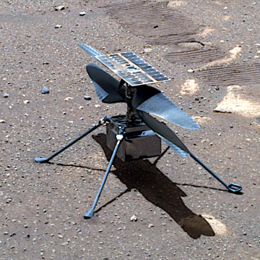2021: NASA’s Ingenuity on Mars
On April 19, 2021, NASA achieved a historic milestone in aerospace engineering by successfully flying its drone helicopter, Ingenuity, on Mars. This groundbreaking event marked the first powered, controlled flight by an aircraft on another planet, showcasing the incredible advancements in space exploration.
Ingenuity’s flight, although short-lived at just 39 seconds, demonstrated the feasibility of heavier-than-air flight in the thin atmosphere of Mars. This remarkable achievement opens up new possibilities for future aerial exploration of Mars and other celestial bodies, potentially revolutionizing our approach to studying and exploring the solar system.
The Journey to Mars
The journey to Mars has been a long and challenging one for scientists and engineers at NASA. The idea of sending a helicopter to another planet seemed like science fiction just a few decades ago, but with advancements in technology and a relentless pursuit of knowledge, it became a reality.
Before Ingenuity’s historic flight, NASA’s Mars rovers, such as Sojourner, Spirit, Opportunity, and Curiosity, paved the way for exploring the Red Planet’s surface. These rovers provided valuable data about the Martian environment, including its geology, climate, and potential for hosting life.
However, the rovers had their limitations. They could only cover a limited distance each day and couldn’t access certain areas with challenging terrains. To overcome these limitations and explore more of Mars, NASA engineers came up with the idea of sending a helicopter to the planet.
The Ingenuity of Ingenuity
Ingenuity, the small drone helicopter, was designed and built specifically for the Mars mission. It weighs only about 4 pounds (1.8 kilograms) and stands at just 1.6 feet (0.5 meters) tall. Its compact size and lightweight construction were essential for it to be able to fly in the thin atmosphere of Mars.
The helicopter is equipped with two sets of rotor blades that spin in opposite directions at a speed of about 2,400 rotations per minute. These high-speed rotations generate enough lift to overcome Mars’ low gravity and allow Ingenuity to take flight.
Ingenuity also carries a suite of cameras that capture stunning images of the Martian landscape. These images not only provide valuable scientific data but also captivate the public’s imagination and inspire future generations of scientists and engineers.
Overcoming Challenges
Ingenuity’s flight on Mars was not without its challenges. The thin atmosphere of Mars, with only about 1% the density of Earth’s atmosphere, presented a significant obstacle for the helicopter’s flight. To overcome this challenge, NASA engineers had to design Ingenuity with larger rotor blades and spin them at a much higher speed than would be necessary on Earth.
Additionally, the extreme temperatures on Mars posed a threat to the helicopter’s electronics and batteries. To mitigate this risk, Ingenuity is equipped with a built-in heater to keep its vital components warm during the cold Martian nights.
Despite these challenges, NASA’s team of engineers and scientists persevered, pushing the boundaries of what was thought possible in aerospace engineering. Their hard work and dedication paid off when Ingenuity took its first historic flight on April 19, 2021.
The Future of Martian Exploration
The success of Ingenuity’s flight opens up a new era of exploration on Mars and beyond. With the ability to fly, future missions could cover greater distances, access hard-to-reach areas, and gather more data about the Red Planet.
Future aerial exploration on Mars could also aid in the search for signs of past or present life. The ability to fly over Martian terrain allows scientists to study areas that were previously inaccessible, potentially uncovering new clues about the planet’s history and habitability.
Moreover, the technology developed for Ingenuity could be adapted for future missions to other celestial bodies, such as the moon or even distant planets. This could revolutionize our approach to space exploration and provide new insights into the mysteries of the solar system.
In conclusion, NASA’s achievement of flying Ingenuity on Mars on April 19, 2021, marks a significant milestone in aerospace engineering and space exploration. The success of this historic flight demonstrates the ingenuity and determination of the human spirit to push the boundaries of what is possible. With future missions and advancements in technology, we can expect even more groundbreaking discoveries and a deeper understanding of our place in the universe.

